#Juan Bautista de Anza
Text


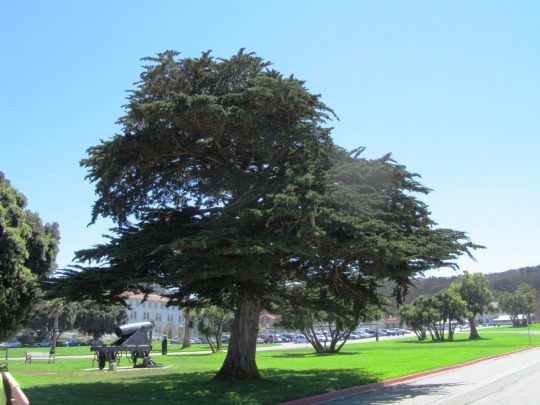
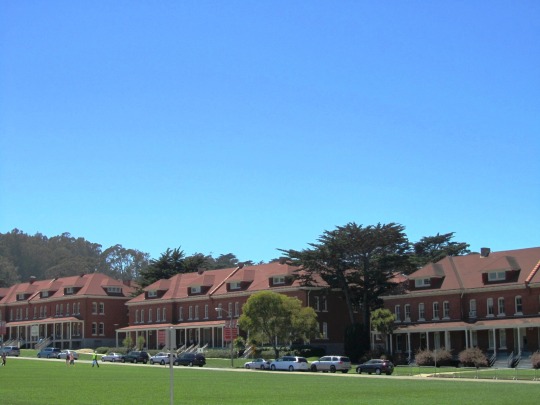
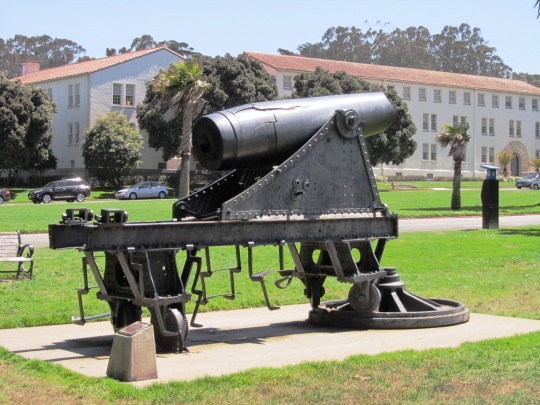


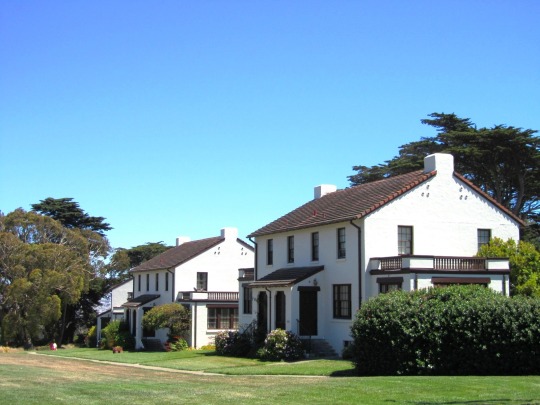
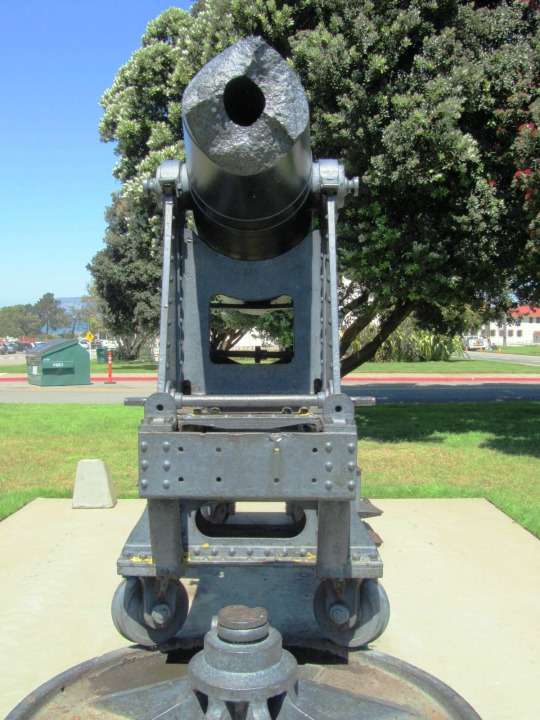



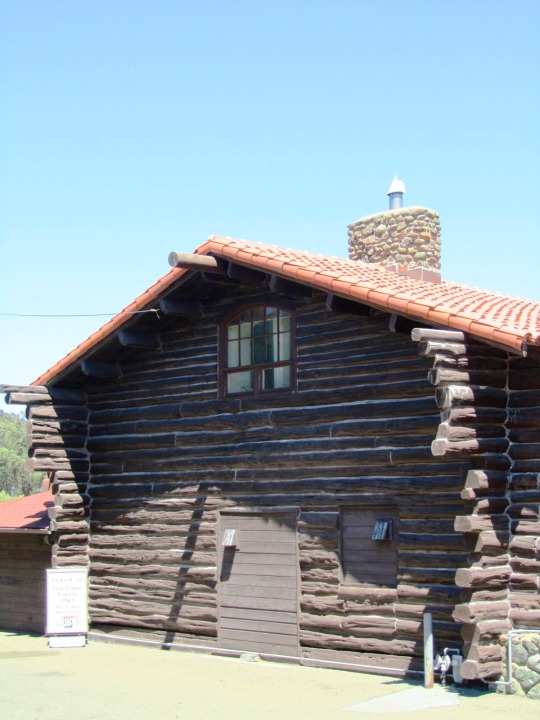

Juan Bautista de Anza found the site for the Presidio of San Francisco on March 28, 1776.
#Ordoñez Gun#Juan Bautista de Anza#site#Presidio of San Francisco#USA#parade grounds#barracks#architecture#28 March 1776#anniversary#travel#US history#summer 2012#cityscape#tourist attraction#landmark#tree#lawn#flora#California#West Coast#original photography#vacation#log cabin
1 note
·
View note
Video
youtube
Desert Sculptures - Borrego Springs, CA - Small Big Trips
#youtube#borrego springs#california#daniel nobre#tourism#travel#leisure#desert sculptures#juan bautista de anza#christmas circle#anza borrego#state park
1 note
·
View note
Text
Events 3.28 (before 1940)
AD 37 – Roman emperor Caligula accepts the titles of the Principate, bestowed on him by the Senate.
193 – After assassinating the Roman Emperor Pertinax, his Praetorian Guards auction off the throne to Didius Julianus.
364 – Roman Emperor Valentinian I appoints his brother Flavius Valens co-emperor.
1065 – The Great German Pilgrimage, which had been under attack by Bedouin bandits for three days, is rescued by the Fatimid governor of Ramla.
1566 – The foundation stone of Valletta, Malta's capital city, is laid by Jean Parisot de Valette, Grand Master of the Sovereign Military Order of Malta.
1776 – Juan Bautista de Anza finds the site for the Presidio of San Francisco.
1795 – Partitions of Poland: The Duchy of Courland and Semigallia, a northern fief of the Polish–Lithuanian Commonwealth, ceases to exist and becomes part of Imperial Russia.
1801 – Treaty of Florence is signed, ending the war between the French Republic and the Kingdom of Naples.
1802 – Heinrich Wilhelm Matthäus Olbers discovers 2 Pallas, the second asteroid ever to be discovered.
1809 – Peninsular War: France defeats Spain in the Battle of Medellín.
1814 – War of 1812: In the Battle of Valparaíso, two American naval vessels are captured by two Royal Navy vessels.
1842 – First concert of the Vienna Philharmonic Orchestra, conducted by Otto Nicolai.
1854 – Crimean War: France and Britain declare war on Russia.
1860 – First Taranaki War: The Battle of Waireka begins.
1862 – American Civil War: In the Battle of Glorieta Pass, Union forces stop the Confederate invasion of the New Mexico Territory. The battle began on March 26.
1910 – Henri Fabre becomes the first person to fly a seaplane, the Fabre Hydravion, after taking off from a water runway near in France.
1918 – General John J. Pershing, during World War I, cancels 42nd 'Rainbow' Division's orders to Rolampont for further training and diverted it to the occupy the Baccarat sector. Rainbow Division becomes "the first American division to take over an entire sector on its own, which it held longer than any other American division-occupied sector alone for a period of three months".
1918 – Finnish Civil War: On the so-called "Bloody Maundy Thursday of Tampere", the Whites force the Reds to attack the city center, where the city's fiercest battles being fought in Kalevankangas with large casualties on both sides. During the same day, an explosion at the Red headquarters of Tampere kills several commanders.
1920 – Palm Sunday tornado outbreak of 1920 affects the Great Lakes region and Deep South states.
1933 – The Imperial Airways biplane City of Liverpool is believed to be the first airliner lost to sabotage when a passenger sets a fire on board.
1939 – Spanish Civil War: Generalissimo Francisco Franco conquers Madrid after a three-year siege.
0 notes
Text
The Power of Water, Los Angeles
The Power of Water is WPA sculptural group and fountain located in Lafayette Park, Los Angeles, designed in 1934. The artists were Henry Lion, Jason Herron, and Sherry Peticolas. The scupture stands in a triangle formed by Hoover Street, La Fayette Park Place, and Wilshire Boulevard. The fountain features a heroic-sized female figure, symbolizing the power of water, set on a pedestal atop an oblong concrete pool. The southern wall of the pool is decorated with figures in bas-relief showing people hastening to drink from a waterfall.

The Power of Water, general view
The sculpture is one of hundreds of public sculptures created during the federally-assisted Public Works of Art Project. The designs were approved March 14, 1934; the work was completed Sept. 1934. The top figure measures 10 ft x 3 ft x 6 ft 6 in; the bas-relief panel below measures 5 ft x 25 ft x 16 ft. Both portions were cast in reinforced concrete. Paul Jeffers was the engineer for the project.


Above photographs: The artists creating the sculpture, 1934. Los Angeles Public Library Photograph Collection.
The water basin at the base of the sculpture was filled in in 1966; when I last saw the work in the early 2000s, there was some degradation of the concrete, with sections of rusted rebar showing. The sculpture was in need of restoration, as it stood neglected beside a tennis court.
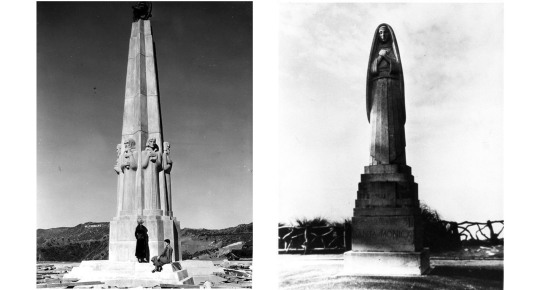
1930s PWAP sculptures: Astronomers Monument, Griffith Observatory, statue of Saint Monica, Santa Monica
If memory serves me correctly, this was one of the first three WPA sculptures commissioned in the L.A. area, the other two being the statue of Santa Monica [in Santa Monica] and the Astronomers' Monument at the Griffith Observatory. The Power of Water sculpture was inventoried for the Save Outdoor Sculpture California survey in 1994; the report indicated “treatment needed.”

Power of Water PWAP (Public Works Art Project). Photo: Andrew Laverdiere, Creative Commons, 2016.

The Power of Water, 1930s view. Los Angeles Public Library Photograph Collection
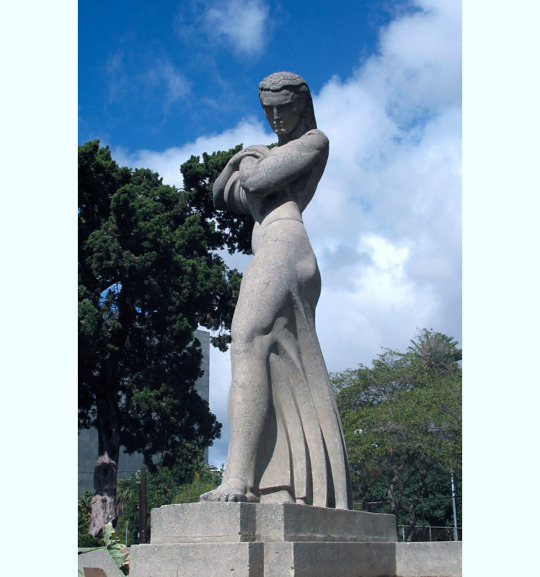
The Power of Water. central figure
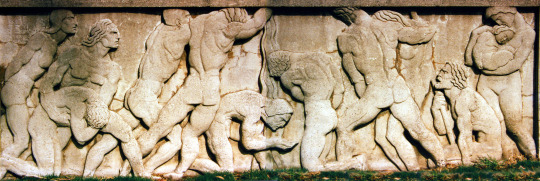
My photo of the bas-relief at the base of the fountain.
The Artists:
Henry Lion (1900-1966) was born in Fresno, California. A resident of Los Angeles, he completed many public commissions for modernist and traditional bronze and stone works. A copy of one of his historical pieces, "Lewis, Clark, and Sacajawea", is at the Gilcrease Institute in Tulsa, Oklahoma. It is modeled after a sketch by Charles Russell.
Lion studied at Otis Art Institute and with Stanton MacDonald-Wright, and for many years taught sculpture at the Hollywood Art Center.

Henry Lion, with Statue of Felipe de Neve
Jason Herron’s (1900-1984) works were mostly figural, often strong portrayals of women, and were notable for the beauty and power in their faces and forms. Los Angeles Times critic Arthur Millier compared her to Rodin and wrote of Herron in 1931: “She has that feeling of life flowing, not only through the body of man, but through his soul, too, which invests her figures with a troubled dignity. They live.”

Jason Herron, sculpture, 1930s
Sherry Peticolas (1904-1956) was born in Waterloo, IA. Active in Los Angeles in the 1920s and 1930s, he studied with Merrell Gage Gutzon Borglum at USC. During the Depression years he worked on the Federal Art Project and fulfilled many important municipal commissions in southern California.
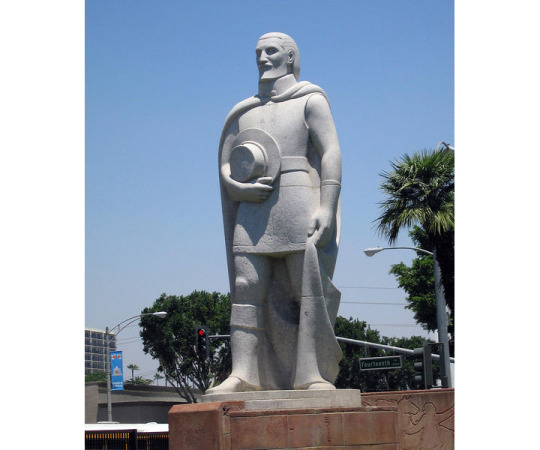
Sherry Peticolas, Juan Bautista De Anza
Excerpt from an interview with Henry Lion:
BH: Did you work with any of the other artists in any way on the Project?
HL: The three of us did one large project in Lafayette Park, "The Power of Water" figure.
BH: "Power of Water?"
HL: "Power of Water" figure in Lafayette park. It was done by Jason Herron, Sherry Peticolas and I, the three of
us together.
BH: What was the subject matter of that one?
HL: Well there is one main figure in the center of the design, seven foot by about an eight foot figure of
composition stone. Then in front is a long high relief depicting water and it has two pools one above and one
down below and the water falling into the lower pool from above.
BH: Did you each do a different set of figures for it?
HL: The whole design is mine and the modeling is mine. But Sherry Peticolas did mainly the engineering, casting
and all sort of thing.
BH: Was Sherry Peticolas man or woman?
HL: A man.
BH: A man? and Jason Herron was a woman!
HL: That's right.
BH: What was her part in it?
HL: She worked with me on it. She helped in the casting and….There is an awful lot of work to it you know, in
the way engineering. So we all three worked on it.
BH: How long did it take you to do it? Do you remember now?
HL: I believe it took several months to do it. It's surprising how much you forget. It really took several months to
do it. How do people write their biographies?
BH: That's why the archives are important, nobody had time at that time to get it written down.
HL: It's surprising how much you forget.
Sources:
0 notes
Text
Senior Friendly Apartments
Many seniors prefer to remain in their own homes and age in place. They may modify their houses to make them more accessible, install safety features, or hire home care services to assist with daily activities. Others opt to live in rental communities. While some senior citizens may face various health issues associated with aging, maintaining good physical and mental health is essential. They should have regular medical check-ups, exercise, eat healthy, and participate in social engagement. If you're looking for senior apartments in San Jose CA, check out Virginia Street Studios. You'll find everything you need to stay comfortable inside your home, including an air conditioner, ceiling fan, and a fully-equipped kitchen.
Secure Senior Homes in San Jose CA
Independent living communities, also known as retirement communities or senior apartments, offer housing options specifically designed for older adults. These neighborhoods often provide amenities such as recreational activities, maintenance services, and social opportunities while allowing residents to maintain an independent lifestyle. An essential feature in any apartment complex is controlled access systems, such as key cards, key fobs, or biometric authentication, which help to restrict admission to authorized individuals only. Check out Virginia Street Studios if you're looking for senior housing San Jose CA locals trust. They provide controlled entry to residents, which can significantly enhance the facility's security, reducing the risk of unauthorized persons gaining access to the premises.

The History of San Jose, California
San Jose was founded on November 29, 1777, as the Pueblo de San Jose de Guadalupe, making it the first civilian settlement in California. It was established as a farming community by Spanish colonists under the direction of Lieutenant Colonel Juan Bautista de Anza. In 1821, Mexico gained independence from Spain, and San Jose became part of the country. In 1846, during the Mexican-American War, American forces occupied San Jose. It eventually became part of the United States under the Treaty of Guadalupe Hidalgo in 1848. The discovery of gold in California in 1848 sparked the famous Gold Rush, leading to a population boom in San Jose and the surrounding region.
Rosicrucian Egyptian Museum
The Rosicrucian Egyptian Museum is home to one of the largest collections of Egyptian artifacts in the western United States. It has over 4,000 objects, including mummies, statues, jewelry, pottery, and architectural elements, dating back thousands of years. The museum comprehensively overviews ancient Egyptian culture, history, and mythology. It allows visitors to explore the daily life, religious beliefs, and artistic achievements of the ancient Egyptians through the museum's exhibits. Its architecture incorporates elements inspired by the Temple of Amon at Karnak, giving visitors a sense of stepping into an Egyptian sanctuary. The facility also features a planetarium that offers astronomy and space exploration educational shows.
Silicon Valley Latinos Face Ongoing Struggles
The term "Latinos" refers to people with cultural or ancestral ties to Latin America, encompassing countries in the Americas where Romance languages derived from Latin are predominantly spoken. Latinos can consist of individuals from countries such as Mexico, Puerto Rico, Cuba, the Dominican Republic, Colombia, Peru, Ecuador, Venezuela, Argentina, and many others. They may speak Spanish, Portuguese, or indigenous languages specific to their region. Latinos have significantly contributed to various fields, including art, literature, music, science, sports, politics, and more. They have enriched the cultural fabric of countries where they have settled, including the United States and other parts of the world, with their traditions, languages, cuisines, and customs. Click here to read more.
Link to maps
Rosicrucian Egyptian Museum
1660 Park Ave, San Jose, CA 95191, United States
Get on I-280 S from Park Ave
7 min (2.3 mi)
Continue on I-280 S to E Virginia St. Take the Virginia St exit from I-280 S
1 min (0.8 mi)
Use the left lane to turn left onto E Virginia St
Destination will be on the left
15 sec (230 ft)
Virginia Street Studios | Affordable Senior Apartments
295 E Virginia St, San Jose, CA 95112, United States
0 notes
Text

A long-exposure photograph shows a field of Phacelia flowers waving in the wind in the Temblor Range of the Carrizo Plain National Monument in 2017. © Provided by National Geographic
Why 2023 Could Be The Year of The Superbloom
An abundance of rain in California has set the stage for an epic “sea of flowers” this spring. Here’s how to see this increasingly rare phenomenon—responsibly.
A long-exposure photograph shows a field of Phacelia flowers waving in the wind in the Temblor Range of the Carrizo Plain National Monument in 2017.
— Photographs By Justin Benttinen | January 18, 2023 | By Alejandra Borunda
“Superblooms” of California and the U.S. Southwest are the stuff of (literal) legend. For centuries, Indigenous communities have celebrated massive springtime blossomings of chia, desert lilies, tarweeds, sunflowers, and other flowers with edible seeds or roots. “Fields as verdant as they are flower-covered touch the very waters of the sea,” wrote Spanish colonist Juan Bautista de Anza in 1774.
Today, these floral explosions are confined to pockets of relatively undisturbed habitats, mostly in the vast southwestern deserts of California, Arizona, and Nevada, and pop up only after a good rain year—an increasingly rare event in an era of climate change.

Flowers in the Phacelia genus, desert candle, and California goldfields drape the hillsides of Carrizo Plain National Monument during the 2019 bloom.
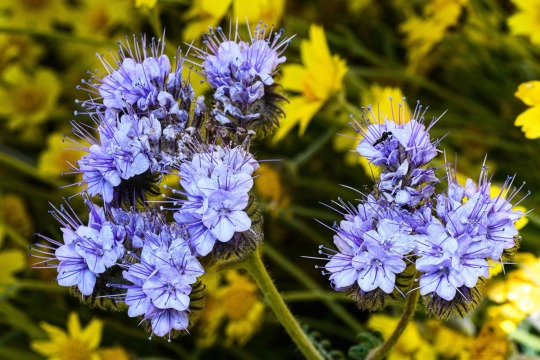
Of the 200 species of Phacelia wildflowers, California is home to 90—making it especially diverse.
This winter, California has seen an abundance—and in some cases overabundance—of rain, which has fallen relatively consistently since late autumn. That’s setting the stage for an excellent bloom, says Abby Wines, a ranger at Death Valley National Park in southern California—though it’s too early to tell if it will be on par with the legendary 2005 bloom, or even the 2017 or 2019 ones.
“It may or may not end up being a superbloom,” a term which has no technical definition and was coined sometime in the 1990s, she says. “But we’re predicting a well-above average bloom.”
But the glorious natural events are under threat—from hundreds of thousands of flower tourists who sometimes trample delicate blooms and soil; invasive species; ongoing development; and climate change, which is already making the region drier and hotter.
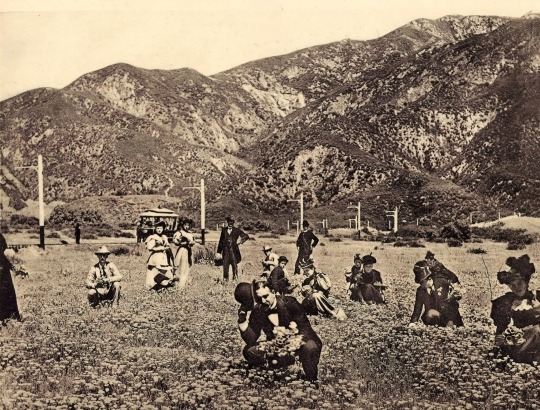
Angelenos used to take trams to Pasadena and Altadena to frolic in fields of poppies, as seen in this 1903 photograph. Photograph By Sepia Times/Universal Images Group Via Getty Images

Californians bragged about their breathtaking flower displays, which graced the cover of this 1935 postcard. Photo By Smith Collection/GADO/Getty Images
Spectacular Superblooms of the Past
Springtime annual wildflower blooms have happened for at least tens of thousands of years, driven in large part by fickle winter rains that would in some years bathe the California landscape from about December through February.
In the distant past, these blooms were often excellent—and enormous. Early Spanish colonizers described years when late winter-blooming native wildflowers stretched along coastal prairies and up narrow canyons, from what’s now the southernmost tip of California all the way up to the Bay Area, through the Central Valley and Sierra foothills, and beyond. After tribal communities collected the abundant edible seeds, they often burned fields intentionally—a strategy that likely encouraged consistent flower regrowth. John Muir described the Central Valley as an “inland sea” lined with blue flowers.
Even through the early 20th century, blooms persisted even in heavily populated Los Angeles County. After a good winter, the San Pasqual hills near Pasadena would glow with poppies: Angelenos hopped on trolleys en masse to the see the flowers. In 1895, one giddy visitor told the Los Angeles Times “it is as if the brightest sunset clouds had dropped down and wrapped the hills in its mantle.” In 1929, a National Geographic writer gushed that “in the early spring, California dons her party dress… literally all outdoors become one vast garden of flowers, until it seems there is no end to the colorful panorama.”
But as development pushed farther out, and more landscapes were converted to agriculture, grazing, subdivisions, or as invasive plants outcompeted the slightly fussy native seedlings, many of California’s spring flower fields disappeared.
“It’s one of the tragedies of the superbloom,” says Naomi Fraga, a botanist at the California Botanic Garden. “L.A. had these extraordinary opportunities to enjoy nature in their city the way it had been.”
Today, seas of flowers emerge almost exclusively in state or national parks—and especially desert regions including Death Valley, Anza-Borrego, Joshua Tree, and the arid Carrizo Plain, where flowers’ emergence contrasts spectacularly with the subdued dry-phase landscapes.
Even in the driest drought, deserts aren’t wastelands, but a flower miracle waiting to happen, says Daniel Winkler, a USGS desert expert: The seeds that feed the blooms are always present in the soil by the billions, just waiting—sometimes for decades—for the right conditions.
“The abundance is always there,” says Evan Meyer, director of the native plant-focused Theodore Payne Foundation, and “each superbloom is seeding the future.”
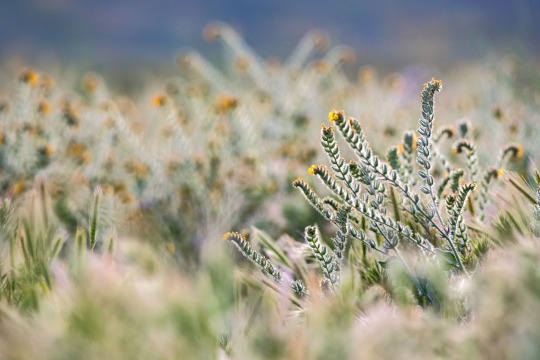
Fiddlenecks thrive in the Carrizo Plain National Monument during the 2017 bloom.
Why Do Superblooms Happen—and What’s Threatened?
Their occurrence is still shrouded in botanical alchemy. There are a few basic ingredients: a good rain year, but one where rains come consistently over several months and not in a single deluge; cool nighttime temperatures; and a well-stocked seed bank. “The preparation for a superbloom isn’t a sprint, it’s a marathon,” says Justen Whittall, a plant biologist at Santa Clara University.
Historical observations—cobbled together from botanists, European explorers, and later newspaper reports—suggest these conditions have historically lined up every decade or so, often following a drought but during an El Niño year, when the U.S. West tends to receive more rainfall.
But climate change is reshaping some of those cues. Instead of smaller, recurring winter storms, precipitation is coming in record-breaking deluges, like the recent spate of atmospheric rivers that dumped a year’s worth of rain onto California in just a few weeks. And heat waves are now sweeping through in the winter, jumpstarting germination at the wrong time, or drying out delicate baby seedlings.
“That’s all making it harder on the native wildflowers,” says Fraga, while favoring introduced species such as Saharan mustard or oatgrass, which grow with impunity under the same conditions.
“I have a lot of respect for these [native] plants, but in some ways they’re kind of wimpy. They’re not strong competitors,” she says, making it even more important to treat them with care when they do bloom, so they can survive and dump their seeds back into the soil to germinate again in the future.
Superblooms also occur in other parts of the world—after all, wildflowers are everywhere. Whittall saw a spectacular South Africa bloom full of familiar-ish wildflowers, and even the rain-starved Atacama Desert occasionally bursts into flower.

A rainbow arches over the Carrizo Plain blooms during a light rain in 2017.
How Can You See Them—Responsibly?
Whether or not 2023 yields a superbloom, visiting spectacular flowers is a really excellent way “to get excited and start thinking about plants,” says Meyer.
The “fragile, special, and in some ways dwindling experiences” can inspire deep relationships with the landscapes around us, he says—and get people involved in protecting them for the next bloom, some 10 years away.
Meyer and others offered a few rules of thumb for being a responsible flower tourist.
First, consider heading to less-trafficked blooms. Anza-Borrego Desert State Park can get over 200,000 visitors during a good flower season, while 2017’s bloom in Joshua Tree National Park brought in more than 1.5 million people.
When you’re there, tread carefully, says Daniel Winkler, a desert biologist for the U.S. Geological Survey: Desert and arid landscapes don’t recover quickly, and “a footprint can last a decade.” So stay on-trail and try not to step in or among the flowers.
Learn before you go—stop at a ranger station, call a “wildflower hotline,” and learn about the vast array of different flowers you might encounter.
Plant your own poppy fields! “What if we brought these flowers back to urban landscapes?” asks Meyer. Convert your front yard, balcony, or whatever space you have into a native wildflower haven. Neat!


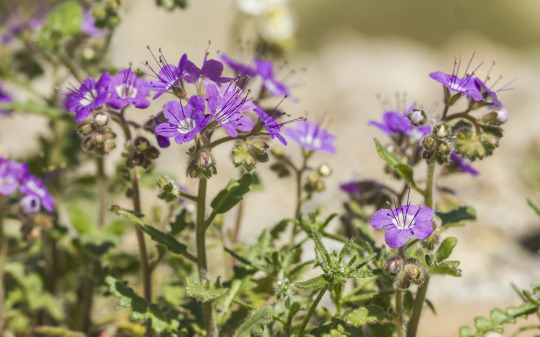
Top: Photo Credit: James W. Cornett, Ecological Consultants. Left: Photo Credit: Collin Barrows Right: Photo Credit: Collin Barrows
0 notes
Text

Portrait of Juan Bautista de Anza (Painted by Fray Orci; 1774, Mexico City)
Namesake of Lake Anza in Berkeley/Orinda, California
0 notes
Text
Anza-Borrego Desert State Park : One Of The Most Beautiful Star
Anza-Borrego Desert State Park is the most important state park in California. 5 hundred miles of dust roads, 12 wilderness areas. And lots of miles of climbing trails present guests with an unparalleled alternative to expertise the wonders of the....
Anza-Borrego Desert State Park is the most important state park in California. 5 hundred miles of dust roads, 12 wilderness areas. And lots of miles of climbing trails present guests with an unparalleled alternative to expertise the wonders of the California Desert. The park is called for Spanish explorer Juan Bautista de Anza and the Spanish phrase borrego, or bighorn sheep. The park options…

View On WordPress
0 notes
Text
Where The Water Runs Dry -- Revisited
Where The Water Runs Dry — Revisited
Santa Cruz River South of Tucson — Image by kenne
We live in a land
where the water
runs dry,
the supply
no longer sustainable
from the sky.
There was a time
when nature
met the need
until it met
the adversary,
greed.
— kenne

View On WordPress
#Juan Bautista de Anza National Historic Trail#Santa Cruz River#Southern Arizona#Tubac#Tucson Arizona#Where The Water Runs Dry
1 note
·
View note
Photo
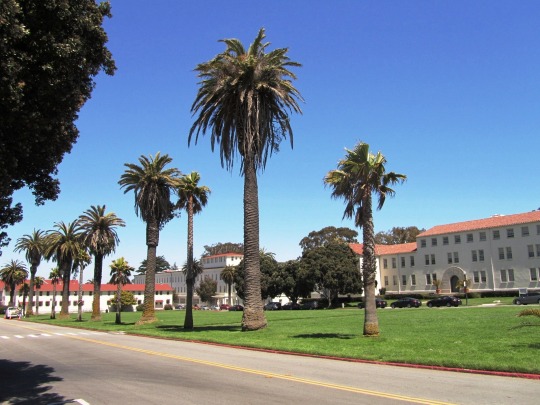
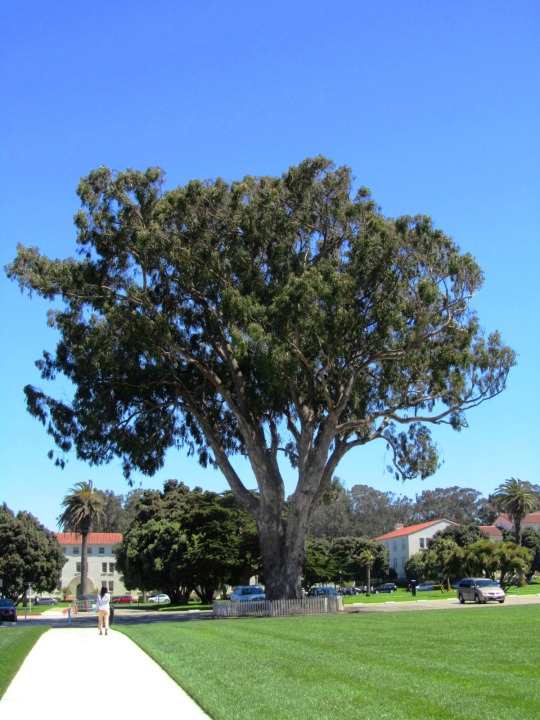
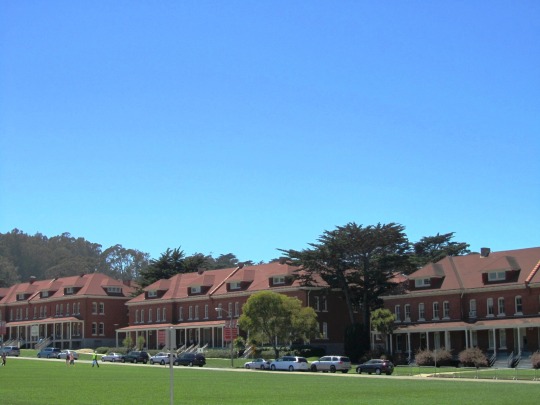
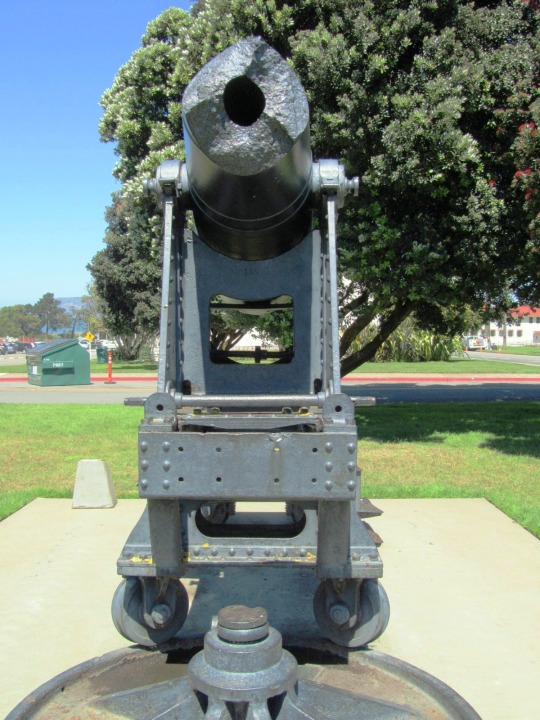


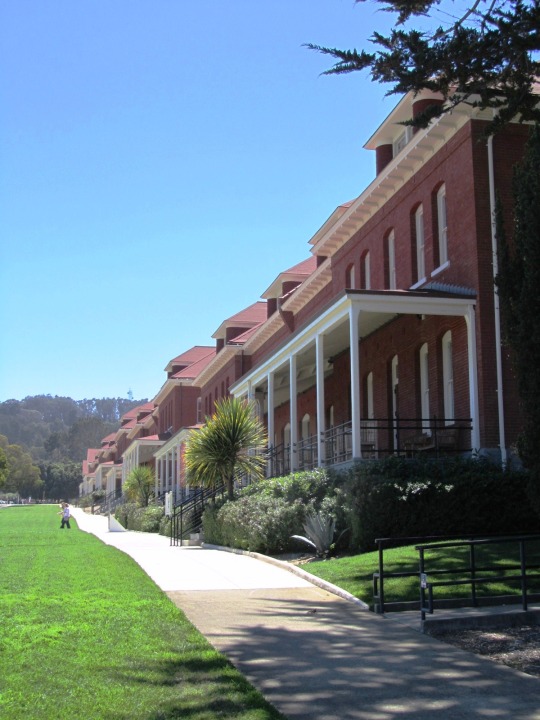



Juan Bautista de Anza found the site for the Presidio of San Francisco on March 28, 1776.
#Ordoñez Gun#Juan Bautista de Anza#site#Presidio of San Francisco#USA#parade grounds#barracks#architecture#28 March 1776#anniversary#travel#US history#summer 2012#cityscape#tourist attraction#landmark#tree#lawn#flora#California#West Coast#original photography
1 note
·
View note
Photo

- ¡Somos expedicionarios! Vamos a donde Dios nos lleve, p’al norte, para establecer una ruta terrestre que connecta a mi hermano ¡Nueva España! Vayan subiendo ¡hasta Alta California!
“We are explorers! We are going as far as god permits us, to the north, to establish a land route that connects to my brother, New Spain! Everyone mount up! To Alta California!”
Mun Notes: Just a little tidbit of Californian history during the Expedition of Anza that began in modern day northern Mexico on September 1775! A time where liddle boy Califas grew and grew! The result of this expedition resulted in the establishment of San Francisco. This sketch’s background here is supposed to be Lt. Col. Juan Bautista de Anza’s camp situated next to a Chumash settlement.
But also!! Happy 10th post and 10+ followers! GAH! I am so happy people stopped by to check out my little sideblog, which was partly started on a whim, but also for my infatuation with Californian history >3<)/ Thank you to my followers and visitors!
9 notes
·
View notes
Text
Events 3.28
AD 37 – Roman emperor Caligula accepts the titles of the Principate, bestowed on him by the Senate.
193 – After assassinating the Roman Emperor Pertinax, his Praetorian Guards auction off the throne to Didius Julianus.
364 – Roman Emperor Valentinian I appoints his brother Flavius Valens co-emperor.
1566 – The foundation stone of Valletta, Malta's capital city, is laid by Jean Parisot de Valette, Grand Master of the Sovereign Military Order of Malta.
1776 – Juan Bautista de Anza finds the site for the Presidio of San Francisco.
1795 – Partitions of Poland: The Duchy of Courland and Semigallia, a northern fief of the Polish–Lithuanian Commonwealth, ceases to exist and becomes part of Imperial Russia.
1801 – Treaty of Florence is signed, ending the war between the French Republic and the Kingdom of Naples.
1802 – Heinrich Wilhelm Matthäus Olbers discovers 2 Pallas, the second asteroid ever to be discovered.
1809 – Peninsular War: France defeats Spain in the Battle of Medellín.
1814 – War of 1812: In the Battle of Valparaíso, two American naval vessels are captured by two Royal Navy vessels.
1842 – First concert of the Vienna Philharmonic Orchestra, conducted by Otto Nicolai.
1854 – Crimean War: France and Britain declare war on Russia.
1860 – First Taranaki War: The Battle of Waireka begins.
1862 – American Civil War: In the Battle of Glorieta Pass, Union forces stop the Confederate invasion of the New Mexico Territory. The battle began on March 26.
1910 – Henri Fabre becomes the first person to fly a seaplane, the Fabre Hydravion, after taking off from a water runway near in France.
1918 – General John J. Pershing, during World War I, cancels 42nd 'Rainbow' Division's orders to Rolampont for further training and diverted it to the occupy the Baccarat sector. Rainbow Division becomes "the first American division to take over an entire sector on its own, which it held longer than any other American division-occupied sector alone for a period of three months".
1918 – Finnish Civil War: On the so-called "Bloody Maundy Thursday of Tampere", the Whites force the Reds to attack the city center, where the city's fiercest battles being fought in Kalevankangas with large casualties on both sides. During the same day, an explosion at the Red headquarters of Tampere kills several commanders.
1920 – Palm Sunday tornado outbreak of 1920 affects the Great Lakes region and Deep South states.
1933 – The Imperial Airways biplane City of Liverpool is believed to be the first airliner lost to sabotage when a passenger sets a fire on board.
1939 – Spanish Civil War: Generalissimo Francisco Franco conquers Madrid after a three-year siege.
1941 – World War II: First day of the Battle of Cape Matapan in Greece between the navies of the United Kingdom and Australia, and the Royal Italian navy.
1942 – World War II: A British combined force permanently disables the Louis Joubert Lock in Saint-Nazaire in order to keep the German battleship Tirpitz away from the mid-ocean convoy lanes.
1946 – Cold War: The United States Department of State releases the Acheson–Lilienthal Report, outlining a plan for the international control of nuclear power.
1959 – The State Council of the People's Republic of China dissolves the government of Tibet.
1965 – An Mw 7.4 earthquake in Chile sets off a series of tailings dam failures, burying the town of El Cobre and killing at least 500 people.
1968 – Brazilian high school student Edson Luís de Lima Souto is killed by military police at a student protest.
1969 – Greek poet and Nobel Prize laureate Giorgos Seferis makes a famous statement on the BBC World Service opposing the junta in Greece.
1970 – An earthquake strikes western Turkey at about 23:05 local time, killing 1,086 and injuring at least 1,200.
1978 – The US Supreme Court hands down 5–3 decision in Stump v. Sparkman, a controversial case involving involuntary sterilization and judicial immunity.
1979 – A coolant leak at the Three Mile Island's Unit 2 nuclear reactor outside Harrisburg, Pennsylvania leads to the core overheating and a partial meltdown.
1979 – The British House of Commons passes a vote of no confidence against James Callaghan's government by 1 vote, precipitating a general election.
1990 – United States President George H. W. Bush posthumously awards Jesse Owens the Congressional Gold Medal.
1994 – In South Africa, African National Congress security guards kill dozens of Inkatha Freedom Party protesters.
1999 – Kosovo War: Serb paramilitary and military forces kill at least 130 Kosovo Albanians in Izbica.
2001 – Athens International Airport Eleftherios Venizelos begins operation.
2003 – In a friendly fire incident, two American A-10 Thunderbolt II aircraft attack British tanks participating in the 2003 invasion of Iraq, killing one soldier.
2005 – An earthquake shakes northern Sumatra with a magnitude of 8.6 and killing over 1000 people.
2006 – At least one million union members, students and unemployed take to the streets in France in protest at the government's proposed First Employment Contract law.
0 notes
Link
Mahler had the Austrian countryside; Strauss had the blue Danube. The enduring beauty of America's own public lands inspires today's composers.
“Landscape Music: Rivers & Trails” is a nationwide series of concerts in fall 2018 commemorating the 50th Anniversaries of the National Trails System Act and the Wild & Scenic Rivers Act. Each of the concerts features world premieres of works composed for chamber ensembles, created in response to remarkable places protected under these two landmark acts.
Composers’ inspirations include the American River (CA), Carson National Recreation Trail (ME), Chattooga River (NC), Juan Bautista de Anza National Historic Tail (AZ and CA), New England National Scenic Trail (CT and MA), North County National Scenic Trail (NY to ND), Owyhee River (NV), Pacific Northwest rivers and trails, Scott River (CA), and Sudbury River (MA).

Fence posts along the Juan Bautista de Anza National Historic Trail in San Juan Bautista, CA (NPS Photo).
Coordinated by the Landscape Music Composers Network and presented in collaboration with organizations, venues, and performers across the country, these concerts highlight and celebrate the significance of national trails and rivers through musical expression.
Concerts are taking place in:
Vallejo, California (9/23)
Decatur, Georgia (9/29)
Houghton, Michigan (10/4)
Portland, Oregon (10/7)
Boston, Massachusetts (11/3)
Related programs are in:
Oregon City, Oregon (9/25)
Medford, Massachusetts (10/18)
New York, New York (11/16)
Learn more about “Landscape Music: Rivers & Trails,” including details about the remaining performances.
#FindYourPark#Cultural Landscape#FindYourWay#Trails#Landscape Music#Music#Composer#National Trails#Inspiration#Public Lands
13 notes
·
View notes
Text

The Fallon House
Re-enactments in traditional clothes typical of the de Anza Trail experience.
Displays in front of the Peralta Adobe
The Fallon House
The Peralta Adobe is just across the street from the Fallon House
The Peralta Adobe is a landmark of the Nation Park Service’s Juan de Anza Trail
The pueblo of San Jose was established to feed nearby missions and military forts. The closest is mission is in Santa Clara, just three miles away.
Making candles the old-fashioned way
At the Peralta Adobe on Saturday, 19th November, the city of San Jose celebrated 240 years since the founding of El Pueblo de San José de Guadalupe. Considered the city’s birthday, the official date is technically on November 29, 1777.
The event was hosted by History San Jose; the National Park Service (Juan Bautista De Anza Trail); San Pedro Square Market; and the city’s Councilmember Donald Rocha, and Mayor Sam Liccardo.
Visitors were invited to explore the inside of the historic Luis Maria Peralta Adobe (built before the year 1800) and to enjoy a variety of hands-on activities. Dining was, of course, available from the adjacent vendors in the San Pedro Square Market. Across the street, a tour of the historic Fallon House was available.
The National Park Service and the Juan Bautista de Anza Trail offer displays for visiting guests.
History San Jose and San Jose Public Library’s “California Room” offer materials on the history of the city and its archives.
The National Park Service and the Juan Bautista de Anza Trail offer displays for visiting guests.
Miguel Marquez of the National Park Service is a Bay Area native and works on the Juan de Anza Trail system. He appears here at the adobe with volunteer actors in the traditional dress of the colonial era.
The National Park Service and the Juan Bautista de Anza Trail offer displays for visiting guests.
The Fallon House is an Italianate style home of the city’s early mayor that was fully restored and lavishly furnished. Epoch decor that’s typical of the era can be found inside, although they are not originals of the homeowners.
The modern city is named after Saint Joseph of Guadalupe and was founded by José Joaquin Moraga as the first pueblo (town) in what was then upper Las Californias, the colonial northwestern-most area of New Spain (a viceroyalty). Moraga completed the work set out by Juan Bautista de Anza, an explorer of New Spain, as well as the Governor of Nuevo México (Spanish New Mexico).
San Jose was originally home to the Ohlone Native Americans, but then became the first town in Las Californias that was not a mission or presidio (military post). The town was founded by a small band of settlers, led by De Anza, as a farming community. They were to provide food for the nearby presidios of San Francisco (north) and Monterey (south). Nearby Mission Santa Clara, just three miles away, was also founded just prior that year, January 12, 1777, as the eighth mission established by Father Junípero Serra.
The Luis Maria Peralta Adobe was built before 1800, and remodeled in the mid 19th century. The original builder was probably Manuel Gonzalez, an Apache Indian. The adobe covers an area of 20 feet by 41 feet, and has two connecting rooms of approximately equal size. The walls are about two feet thick and made of adobe blocks that are 22″ by 11″ by 4.” This building was built around the Market Plaza of early San Jose. At the time it was built, this adobe was not unique, but now it is the last vestige of the Pueblo de San Jose de Guadalupe. [Excerted from the National Park Service.]
The Peralta Adobe is located at 184 West Saint John St., San Jose.
History San Jose administers the Peralta Adobe and The Fallon House located on the north side of West Saint John St. The adobe and the Fallon House are open periodically for tours. Contact History San Jose for schedules.
The Founding of the City of San Jose, Celebrating 240 Years at the Peralta Adobe & Fallon House At the Peralta Adobe on Saturday, 19th November, the city of San Jose celebrated 240 years since the founding of El Pueblo de San José de Guadalupe.
0 notes
Link
Si te gustan estos artículos, prueba Revista de Historia Digital GRATIS en https://revistadehistoria.es/prueba-revista-de-historia-digital-gratis/ Juan Bautista de Anza y la exploración de la Alta California
0 notes